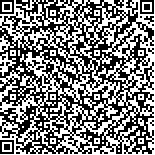孙玮,赵晨光,袁华,等.重复经颅磁刺激对脑卒中后中枢性疼痛及皮质兴奋性的影响[J].中华物理医学与康复杂志,2019,41(4):252-256
扫码阅读全文

|
| 重复经颅磁刺激对脑卒中后中枢性疼痛及皮质兴奋性的影响 |
|
| |
| DOI:DOI:10.3760/cma.j.issn.0254-1424.2019.04.003 |
| 中文关键词: 重复经颅磁刺激 脑卒中 疼痛 皮质兴奋性 |
| 英文关键词: Repetitive transcranial magnetic stimulation Stroke Pain Cortical excitability |
| 基金项目:科技部国际合作专项(2013DFA32610);军队创新工程(16CXZ022);陕西省国际合作项目(2015KW-035) |
|
| 摘要点击次数: 6823 |
| 全文下载次数: 6817 |
| 中文摘要: |
| 目的 观察重复经颅磁刺激(rTMS)对脑卒中后中枢性疼痛(CPSP)的治疗效果,并探讨其作用机制。 方法 选取符合入选标准的CPSP患者40例,按随机数字表法分为治疗组和对照组,每组20例。治疗组给予患侧大脑初级运动皮质(M1区)的rTMS,刺激频率为10 Hz,刺激强度为80%静息运动阈值;对照组给予假刺激,作用部位、治疗声音与治疗组相同。2组患者每日治疗1次,每周6次,共治疗4周。分别于治疗前和治疗4周结束后(治疗后),对2组患者进行评估,评估内容包括目测类比法(VAS)评分、患侧静息运动阈值(RMT)、皮层静息期(CSP)及运动诱发电位(MEP)潜伏期。 结果 治疗组患者治疗后的VAS评分、RMT、CSP和MEP潜伏期分别为(3.1±1.2)分、(51.3±4.8)%、(188.9±63.0)ms和(27.9±5.7)ms,与组内治疗前[(5.1±1.3)分、(60.1±5.9)%、(239.7±43.5)ms和(35.5±4.4)ms]比较,各指标有明显改善,差异有统计学意义(P<0.05);对照组的上述4个指标治疗前后差异无统计学意义(P>0.05)。治疗后,治疗组患者的VAS、RMT、CSP和MEP潜伏期,分别与对照组治疗后比较[(4.7±1.0)分、(57.6±5.1)%、(241.7±33.9)ms和(31.7±5.2)ms],治疗组改善明显优于对照组,且差异有统计学意义(P<0.05)。 结论 高频重复经颅磁刺激可减轻脑卒中后中枢性疼痛,作用机制可能是提高脑卒中患者患侧大脑皮质兴奋性。 |
| 英文摘要: |
| Objective To investigate the effect of repeatedly applying transcranial magnetic stimulation (rTMS) in treating post-stroke pain (CPSP). Methods Forty stroke survivors experiencing CPSP were randomly divided into a treatment group and a control group, each of 20. All of the patients received conventional rehabilitation. In the treatment group, 20 patients received 10 Hz rTMS at 80% of their resting motor threshold applied over the primary motor cortex on their affected side, while those in the control group received sham stimulation. Both groups were treated once a day, 6 times a week for 4 weeks. Before and after the treatment, both groups were assessed using a pain score self-assessed on a visual analogue scale (VAS). Their resting motor thresholds (RMTs), cortical silent periods (CSPs) and motor evoked potentials (MEPs) were also recorded. Results After the intervention, the average VAS score, RMT, CSP and MEP latency of the treatment group were (3.1±1.2), (51.3±4.8)%, (188.9±63.0)ms and (27.9±5.7)ms, all significantly better than those before the intervention [(5.1±1.3), (60.1±5.9)%, (239.7±43.5)ms and (35.5±4.4)ms] (P<0.05). They were also significantly better than those of the control group after the intervention [(4.7±1.0), (57.6±5.1)%, (241.7±33.9)ms and (31.7±5.2)ms] (P<0.05). Conclusion Transcranial magnetic stimulation can relieve post-stroke pain. The mechanisms might be related to positive changes in cortical excitability in the affected hemisphere. |
|
查看全文
查看/发表评论 下载PDF阅读器 |
| 关闭 |
|
|
|